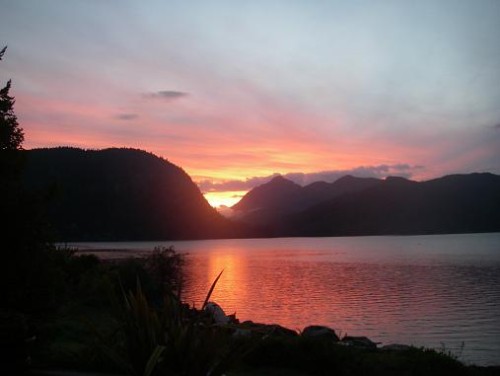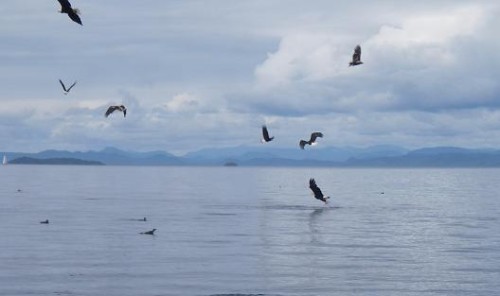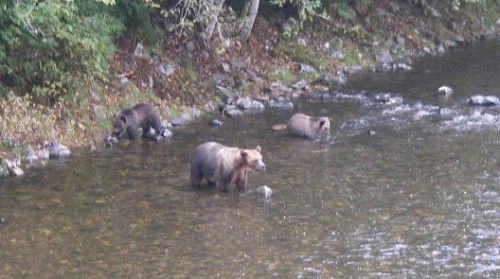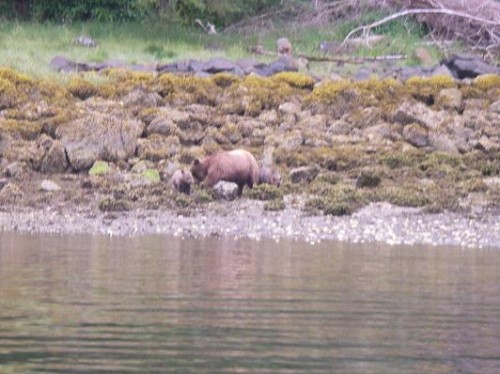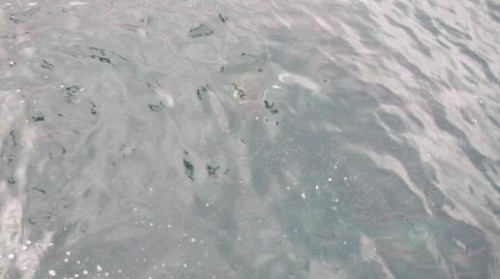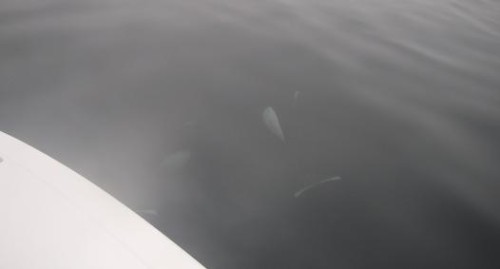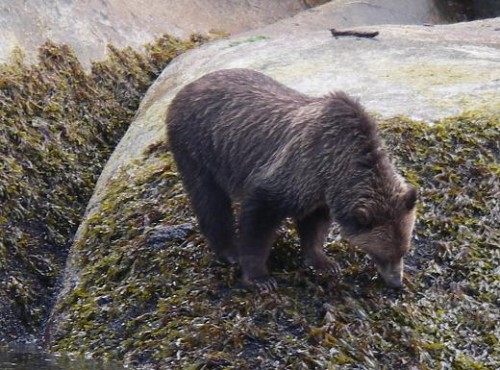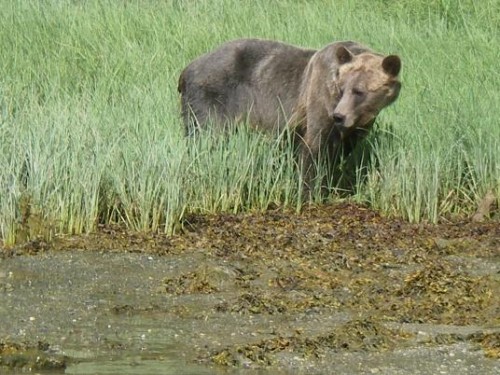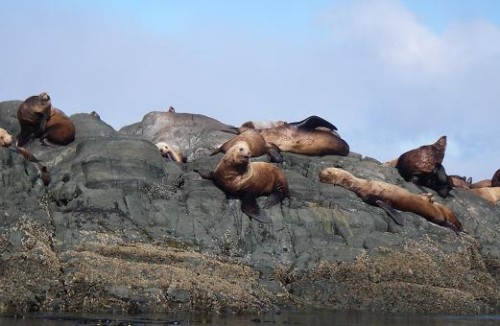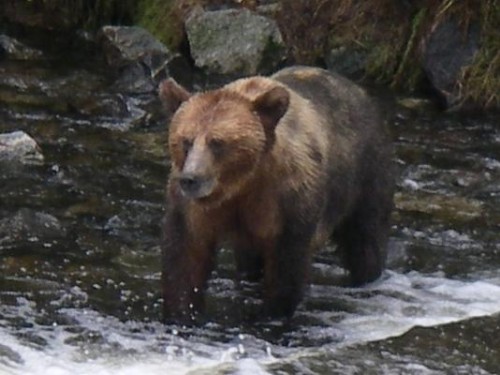
“The coat of an individual bear may change colour during the year, with the new coat in summer a dark rich brown, while the worn coat becomes tawny or reddish brown. The winter fur is thicker and coarser than the summer fur and appears shaggy. During summer the old inner fur and guard hairs are shed; by autumn there is a fully developed coat, with guard hairs about 10 cm long, underfur about 8 cm long.” This explains the coat on this bear which appears to be in transition form a summer to winter coat. In our grizzly viewing area we have notice that the coats will darken after the grizzlies have been feeding on the oil rich salmon.
